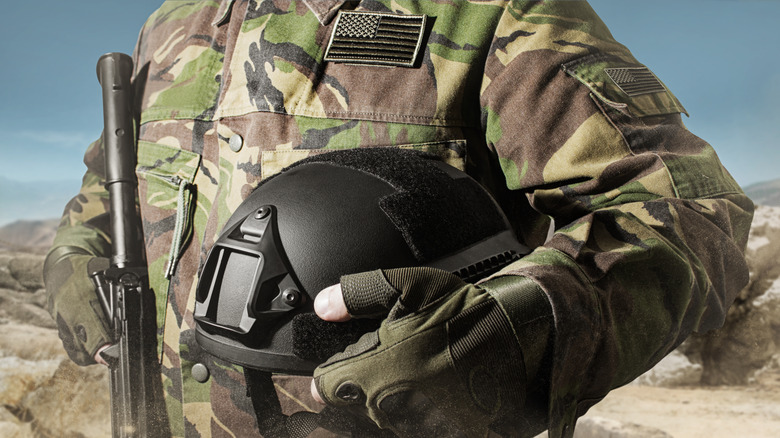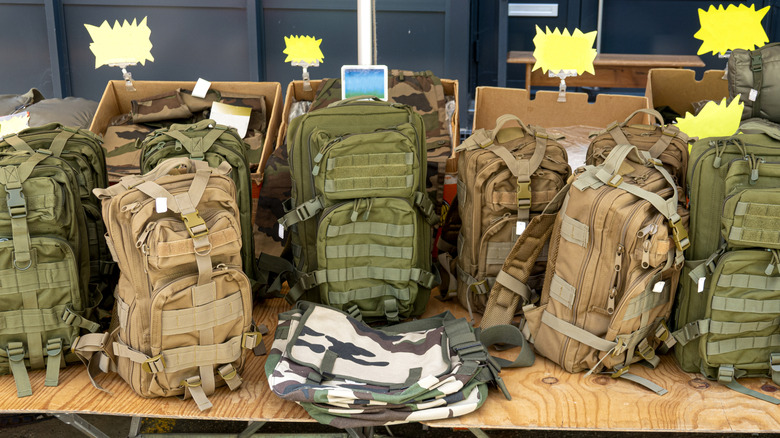What's The Difference Between Military-Grade And Military-Spec?
If you've ever gone shopping, there's a high likelihood you've come across something labeled "military-grade." Perhaps it was an ultra-reinforced phone case or a backpack that looked like it was made to withstand a full-blown war zone. Maybe it was aftermarket car accessories claiming to be tougher than anything else out there. But have you ever stopped to question the integrity of this bold claim? And how do these "military-grade" products differ from those labeled "military-spec"? They sound similar, but the latter is an entirely different beast.
"Military-grade" is a label that gets thrown around fairly loosely, especially in marketing. It clearly refers to a product's toughness and durability, sure — but not necessarily to its standards or verification. "Military-spec" (short for military specification and also known as MIL-SPEC) is another story. That one has teeth. It refers to products built to meet the technical criteria laid out by the U.S. Department of Defense, and those standards leave no room for interpretation.
So why does it matter? Because one of these terms is grounded in real, documented performance. The other? Well, it's more about giving you the feeling that something's ready for war, even if it's never seen the inside of a testing lab.
What makes Military-Spec the real deal
When a product receives the "military-spec" label, it's not just a marketing ploy. This label is backed by real technical standards set by the U.S. military that were created to ensure the highest levels of quality, reliability, and durability. Think of it as a badge earned through countless grueling tests — it's not something companies can casually slap on a box just to bolster their sales.
MIL-SPEC guidelines have been strategically designed to cover all aspects of how a material deals with forces like extreme temperatures, vibration, moisture, corrosion, and impact. A great example would be electronic or mechanical components in aircraft or combat vehicles. If these parts were to fail during a mission, the consequences could be catastrophic, so they're tested in some of the most extreme conditions possible.
Earning the MIL-SPEC designation isn't easy or cheap, as manufacturers must adhere to stringent standards and quality checks. It's a sizeable investment, and for good reason. Whether it's essential communications equipment or the armor on history-defining military vehicles, MIL-SPEC is the guarantee you want to see on your product when the stakes are high.
Why Military-Grade can be false advertising
While it may sound just as tough as MIL-SPEC, what does "military-grade" actually mean, then? It's often used as more of a suggestion rather than a true measure of the product's quality. Unlike with MIL-SPEC, there are no standards a product has to meet to be called "military-grade." What often ends up happening is that a product will be inspired by military aesthetics or design without actually going through any regulated quality tests.
This isn't to say that military-grade gear is all fluff, as some of it can be more durable than your average products and great for everyday use. Take something like a military-grade phone case, for example. It might do a great job at protecting your phone from drops or scratches, but what are the chances of it being able to survive sub-zero temperatures and extreme impact? Not very likely.
Ultimately, it comes down to how you're going to use your product. If you're buying gear for daily life, "military-grade" should do just fine. But if you're working in extreme environments or just want the peace of mind that comes with knowing a product has been rigorously tested, MIL-SPEC should be your choice.


